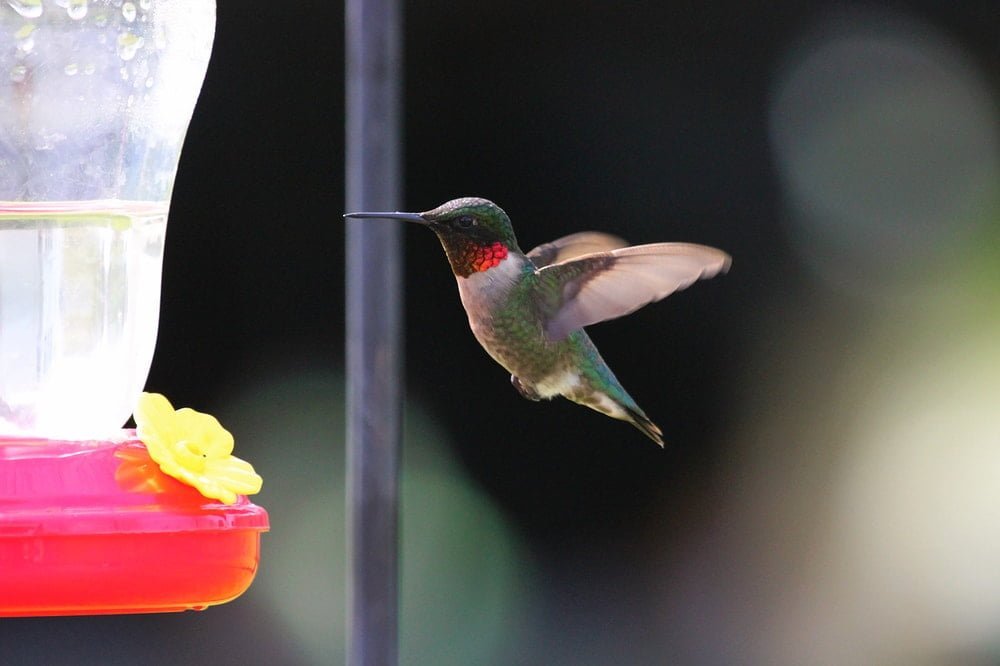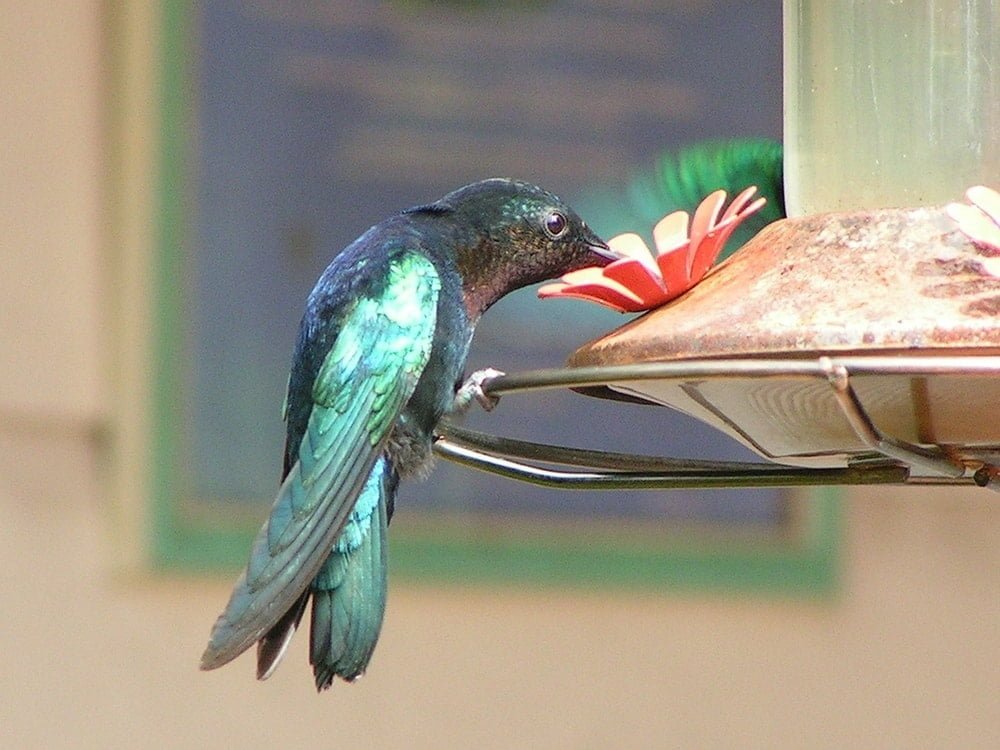Backyard bird watching can be a fun way to pass some time, and one of the most interesting birds to watch is the hummingbird. This tiny creature darts about so quickly, it’s hard to get a good look at it. It’s worth the effort, though, to see the brilliant colors and the amazing wing speed of this tiny creature.
Hummingbirds move so fast, that they need to be constantly filling up on high-energy foods. But they can hover in place, too, especially when it’s time to eat.
Sugar water is ideal for them. They get the energy they need and burn it off before it can do them harm.
You can find these wonderful winged creatures across most of the United States and Canada. Some even make their way as far north as Alaska! There are about 20 species found in North America out of a total of 300 different species in all.
If you want to attract these birds to your backyard, it’s not too hard! You’ll need a feeder with some food. You can even make the food yourself!
Choosing a Feeder
A hummingbird feeder is unique among bird feeders. This bird’s main diet is nectar from flowers. When it can’t find nectar, it will even dine on tree sap. Of course, it also eats small insects. But it relies on the quick energy it draws from flower nectar for most of its energy. Its long, narrow beak is especially suited for its extraction.
Because of that, a hummingbird feeder doesn’t focus on solid foods. Instead, it’s filled with a substitute for nectar. There are commercially-available hummingbird nectars, but you can make your own easily with sugar and water.
However, it’s easiest to buy the feeder itself. Some are tall, narrow tubes. Others are short and wide. The exact shape doesn’t seem to matter to the birds, though.

Red and yellow are common feeder colors. Red does help attract the birds, although they don’t seem to have a preference for yellow. It’s probably best to avoid yellow when possible since it does attract bees and wasps.
Preferably, a hummingbird feeder with an insect trap is best. The sugar water is going to attract many types of insects. So if there’s a way to keep them away, try it. Don’t use insecticides, though, as they will also hurt the birds. Don’t coat the feeder’s pole or the feeder itself with anything to keep the bugs away, either. It can easily get on the bird’s body and wings, making it difficult to fly and preen.
Hummingbirds add color and excitement to your yard. But you might want other decorative patio elements, too.
Where to Put Feeder
Feeding hummingbirds is great in itself, but being able to watch them is a wonderful experience. So having a feeder near a window is a great idea!
It is helpful to have something around the window so the bird won’t crash into it. Blinds or curtains help. Or you can add decals to the window that will help the hummingbird realize something is blocking the way.
You do want the window at least 4-5 feet above the ground so cats and other animals won’t try to prey on the birds. It’s also best to keep the feeder in the shade.
Of course, if you want to feed the birds without seeing them up close, you can hang the feeder on a pole or free a tree branch near your garden. The birds might find it there sooner, too, since they’ll already be in the area. And you can always watch them with binoculars, too!
Check out the best hummingbird feeder – and other types of bird feeders, too!

What Time They Feed
Hummingbirds feed the most at dawn and dusk, although you’ll occasionally see them throughout the day, too.
Most species do migrate. They head north in March and April then return south around September or October.
How To Prepare Food
To make hummingbird food, you simply need water and sugar.
Raw cane sugar is best, although raw sugar isn’t available in the US. You can use processed sugar if necessary. On the other hand, hummingbirds seem to prefer cane sugar to beet sugar.
Ingredients:
- 4 parts water
- 1 part sugar
(for example, 4 cups of water to one cup of sugar. Or one cup of water to ¼ cup of sugar)
Bring the water to a boil, then add the sugar.
Stir until the sugar dissolves completely.
Add the mixture to your feeder and hang the feeder outside.
Extra sugar water can be refrigerated for up to two weeks.
Do not add red dye, honey, gelatin, or anything else to your hummingbird food. These can be harmful to the bird.
Every four to five days, empty your feeder and rinse it well. It’s always better to empty and refill the feeder rather than topping it off. If you see cloudiness or mold at other times, clean it sooner. You can use mild dish detergent for this.
When the temperature is over 80° F (27° C), clean it more often – every 2 or 3 days.
About once a month, clean the feeder more thoroughly with a mild bleach solution – about a tablespoon of bleach per quart of water is plenty. Be sure to rinse the feeder thoroughly with water before refilling it with food!
Conclusion
Watching hummingbirds is an enjoyable way to appreciate nature and it’s also accessible to most people across North America. With a simple water and sugar mix, you’ll be able to create a food that they love and that’s healthy for them. Be sure to hang your hummingbird feeder in a spot where you can appreciate these beautiful and amazing birds!









